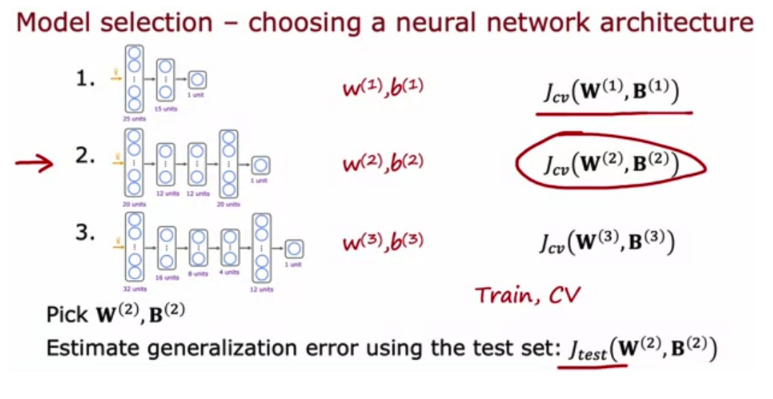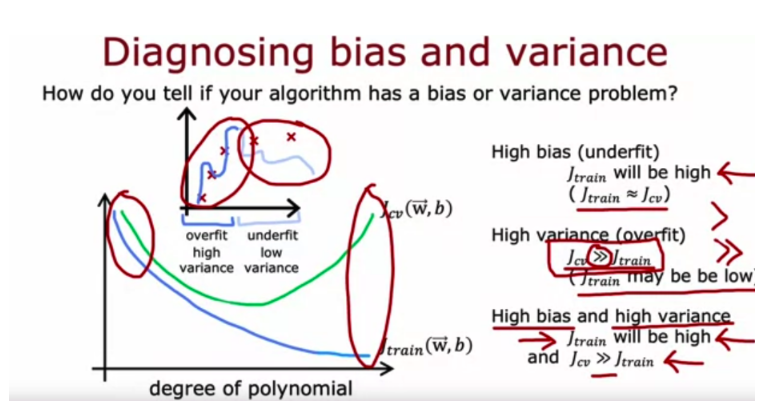advanced learning algorithms coursera week 3 answers
Practice quiz: Advice for applying machine learning
1. In the context of machine learning, what is a diagnostic?
- A process by which we quickly try as many different ways to improve an algorithm as possible, so as to see what works.
- This refers to the process of measuring how well a learning algorithm does on a test set (data that the algorithm was not trained on).
- An application of machine learning to medical applications, with the goal of diagnosing patients’ conditions.
- A test that you run to gain insight into what is/isn’t working with a learning algorithm.
2. True/False? It is always true that the better an algorithm does on the training set, the better it will do on generalizing to new data.
- True
- False

3. For a classification task; suppose you train three different models using three different neural network architectures. Which data do you use to evaluate the three models in order to choose the best one?
- The training set
- The test set
- The cross validation set
- All the data — training, cross validation and test sets put together.
Practice quiz: Bias and variance

4. If the model's cross validation error J cv is much higher than the training error J train , this is an indication that the model has…
- high bias
- high variance
- Low variance
- Low bias

5. Which of these is the best way to determine whether your model has high bias (has underfit the training data)?
- See if the cross validation error is high compared to the baseline level of performance
- Compare the training error to the cross validation error.
- Compare the training error to the baseline level of performance
- See if the training error is high (above 15% or so)

6. You find that your algorithm has high bias. Which of these seem like good options for improving the algorithm’s performance? Hint: two of these are correct.
- Collect additional features or add polynomial features
- Remove examples from the training set
- Decrease the regularization parameter λ (lambda)
- Collect more training examples
7. You find that your algorithm has a training error of 2%, and a cross validation error of 20% (much higher than the training error). Based on the conclusion you would draw about whether the algorithm has a high bias or high variance problem, which of these seem like good options for improving the algorithm’s performance? Hint: two of these are correct.
- Decrease the regularization parameter λ
- Reduce the training set size
- Increase the regularization parameter λ
- Collect more training data
Practice quiz: Machine learning development process

8. Which of these is a way to do error analysis?
- Calculating the training error Jtrain
- Manually examine a sample of the training examples that the model misclassified in order to identify common traits and trends.
- Collecting additional training data in order to help the algorithm do better.
- Calculating the test error Jtest

9. We sometimes take an existing training example and modify it (for example, by rotating an image slightly) to create a new example with the same label. What is this process called?
- Data augmentation
- Machine learning diagnostic
- Error analysis
- Bias/variance analysis

10. What are two possible ways to perform transfer learning? Hint: two of the four choices are correct.
- Given a dataset, pre-train and then further fine tune a neural network on the same dataset.
- You can choose to train all parameters of the model, including the output layers, as well as the earlier layers.
- Download a pre-trained model and use it for prediction without modifying or re-training it.
- You can choose to train just the output layers’ parameters and leave the other parameters of the model fixed.
